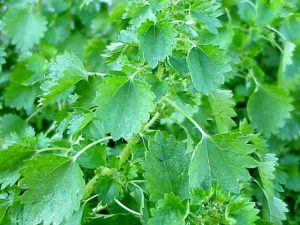
Credit: UF/IFAS
Background
Fireweed (Urtica chamaedryoides) is a winter annual plant that is seen in many pastures of North Florida. It goes by a few other names such as Heartleaf Nettle and Stinging Nettle. This native pasture weed is covered in small stinging hairs that cause very unpleasant sensations when contacted by skin. Fireweed can be a big nuisance, especially when left unchecked.
What does it look like and where does it grow?
Fireweed is typically a small plant with leaves that resemble a strawberry plant. The stem is square and has small pale green flower clusters at points where leaves attach. The notorious stinging hairs are found everywhere on the plant. It is usually found growing along fences, in cow pens and high traffic areas. Although, it is not uncommon to find Fireweed growing in the middle of pastures. It grows very well in areas where the soil is exposed and competition from other plants is limited.
Control
GrazonNext HL at 24 fl. oz/acre, Remedy Ultra at 1 qt./acre (or comparable triclopyr ester product), and Pasturegard HL at 24 fl. oz/acre are all effective herbicides for Fireweed control. There are no grazing restrictions for beef cattle with these herbicides, but lactating dairy animals must be removed for 0 to 14 days with GrazonNext HL and Remedy Ultra, respectively, and one season for Pasturegard HL. Mowing and the use of 2,4-D amine herbicides are ineffective for controlling Fireweed. Catch this pasture weed early with regular scouting during the winter months.
For more information on Fireweed: http://edis.ifas.ufl.edu/ag252
 0
0
